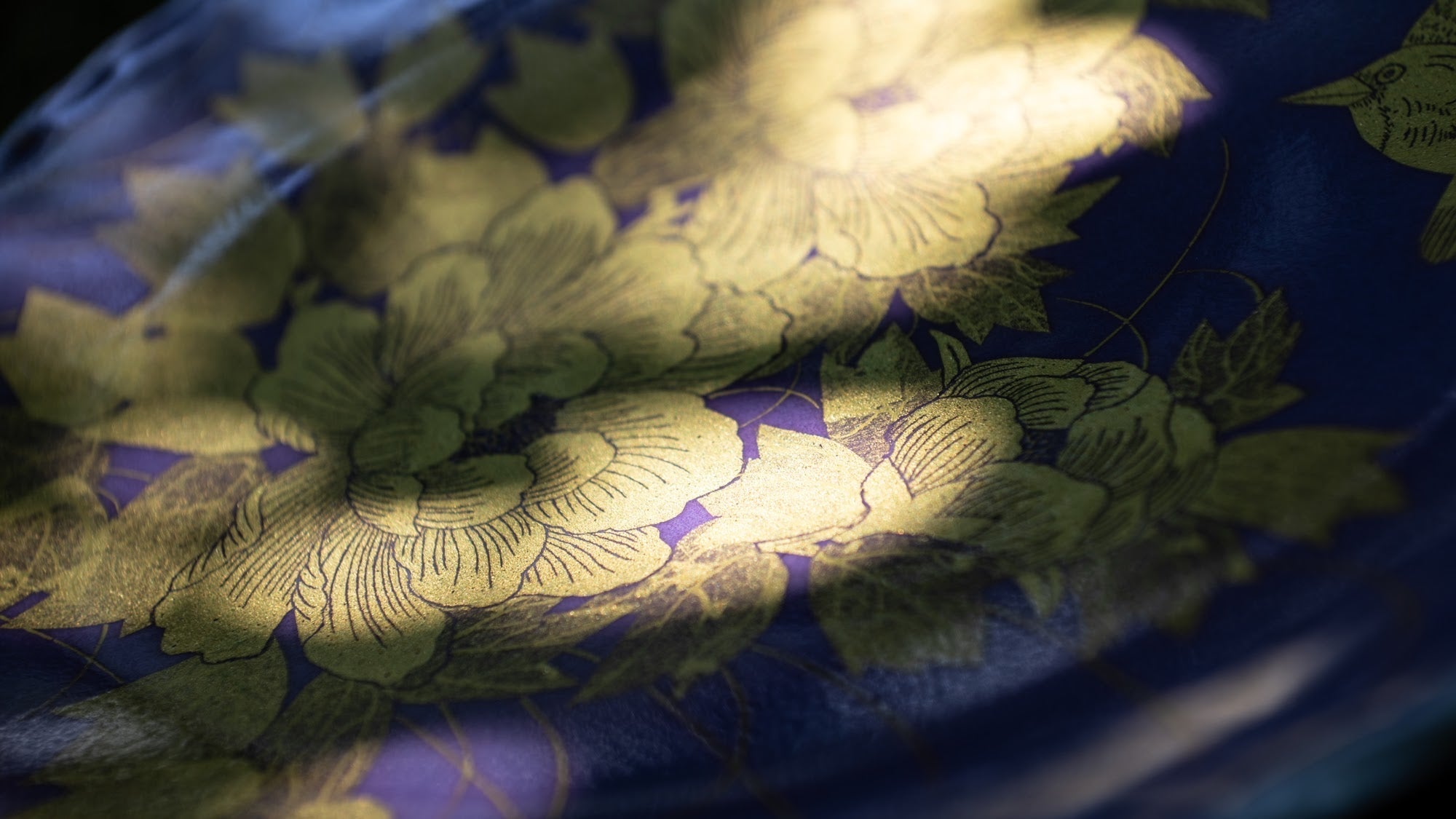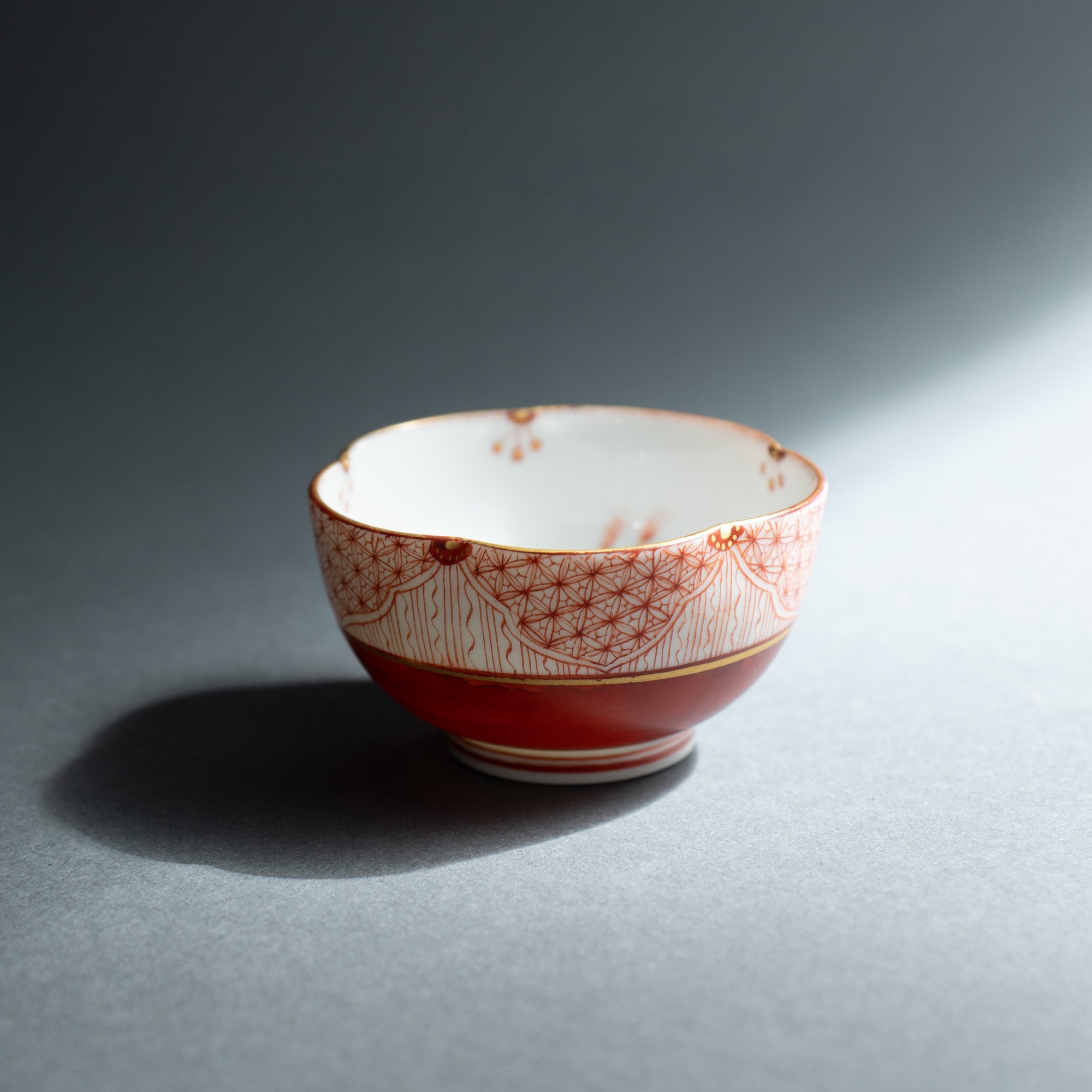
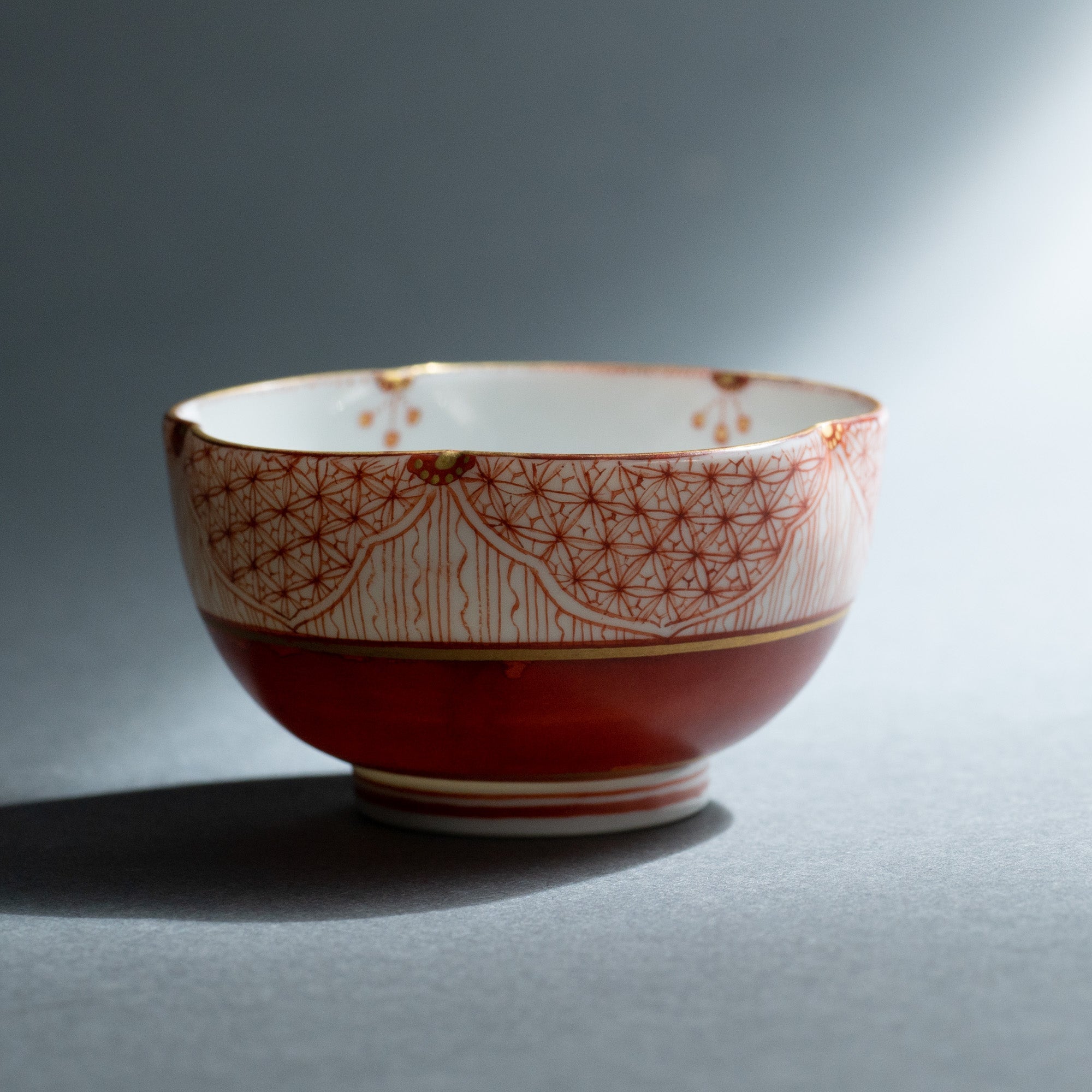
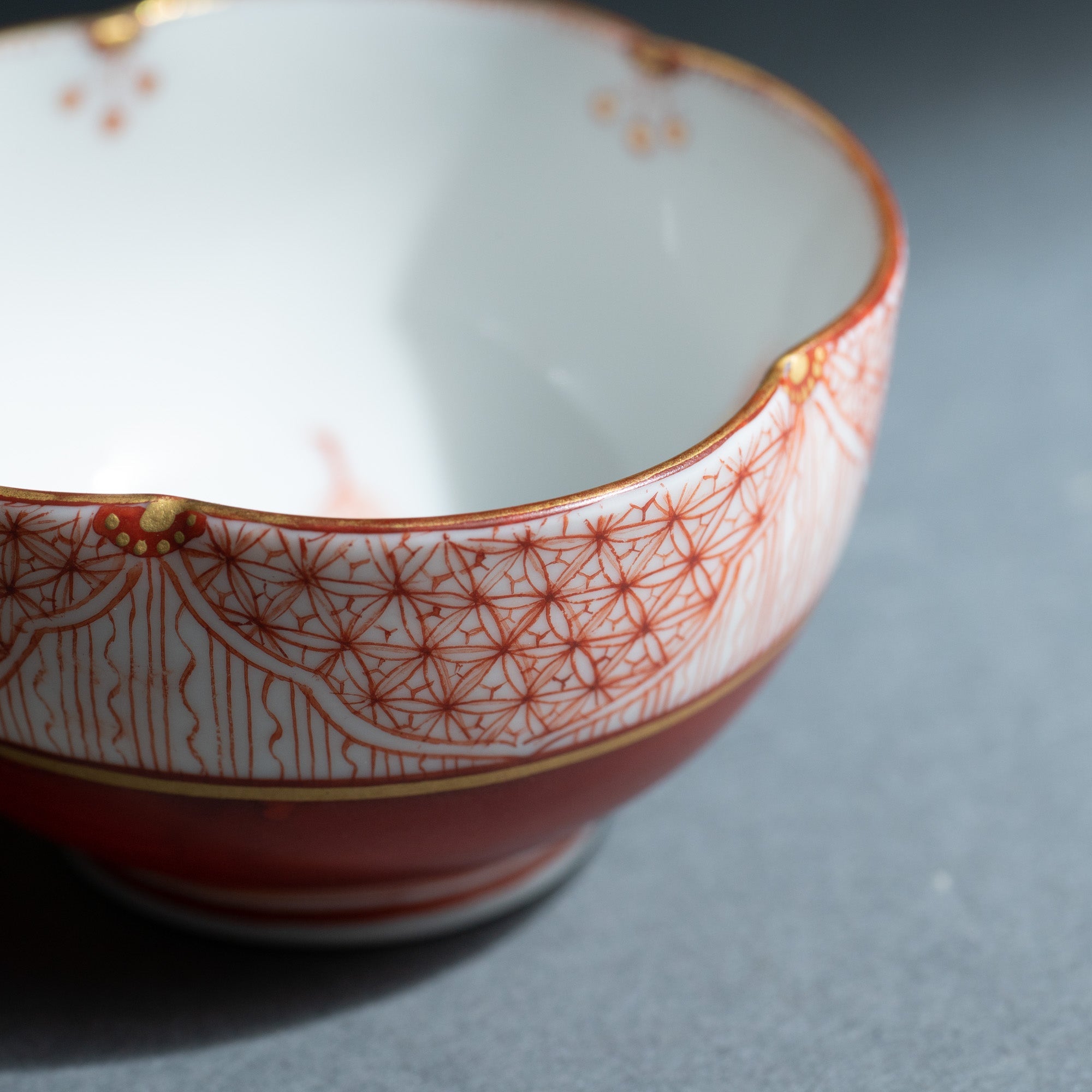
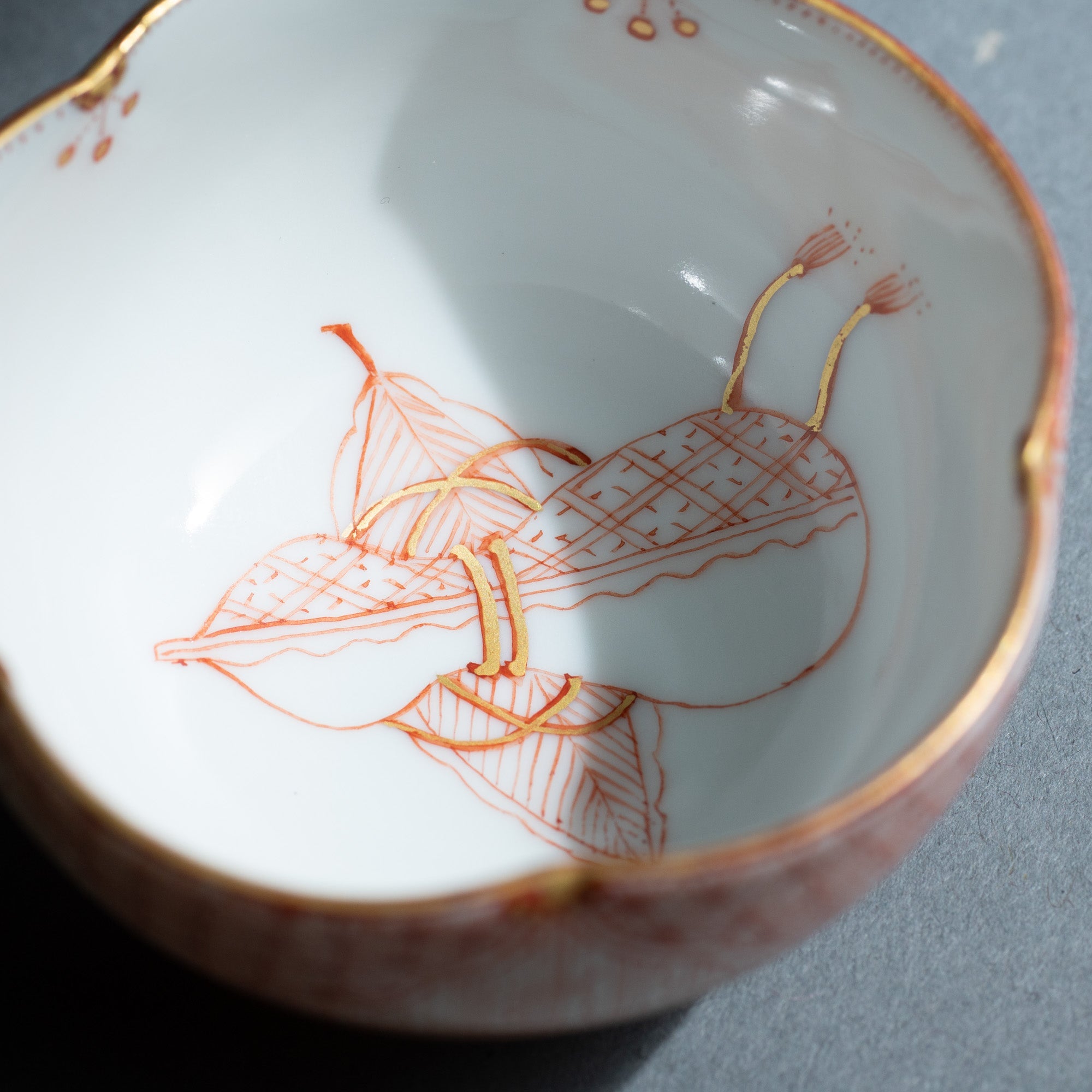
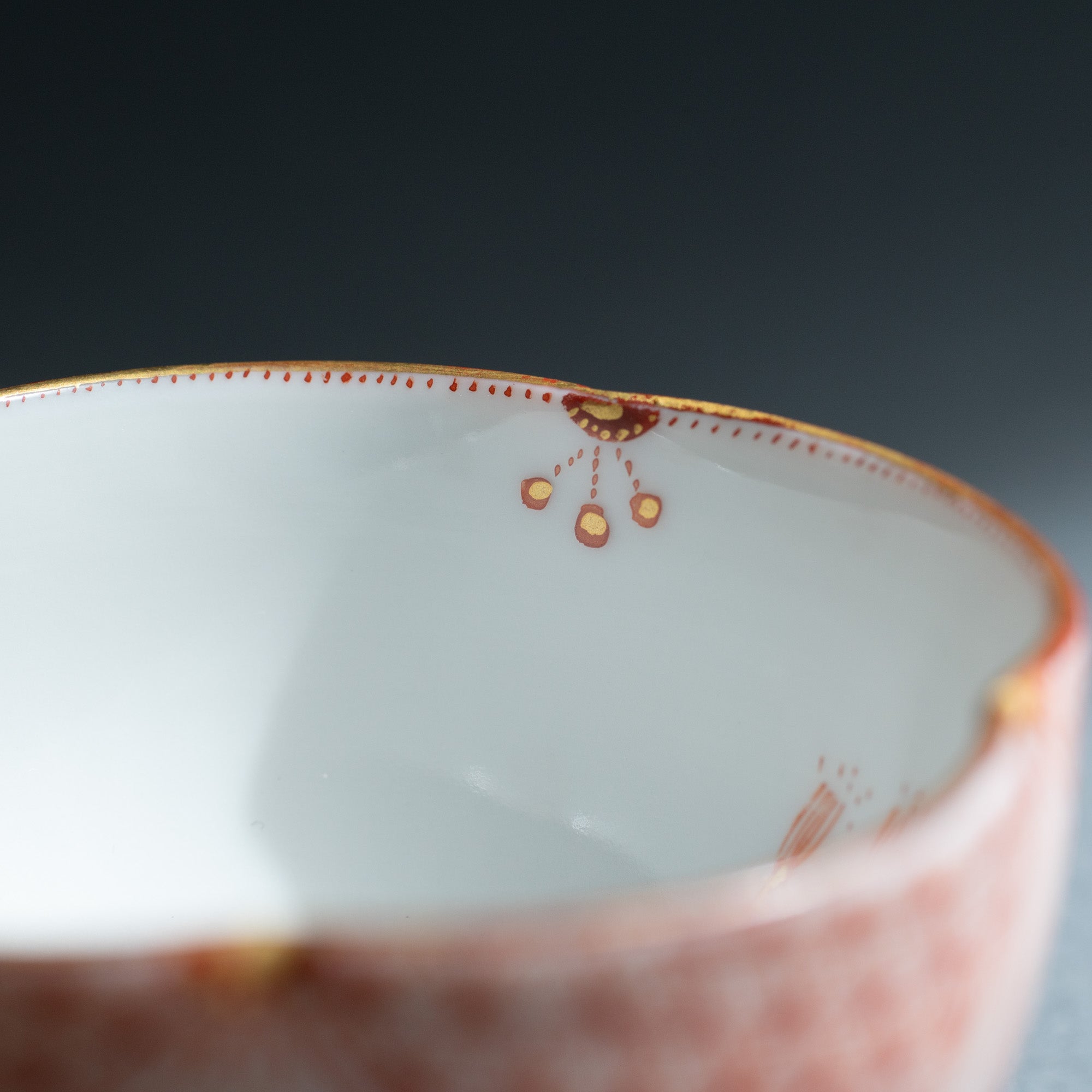
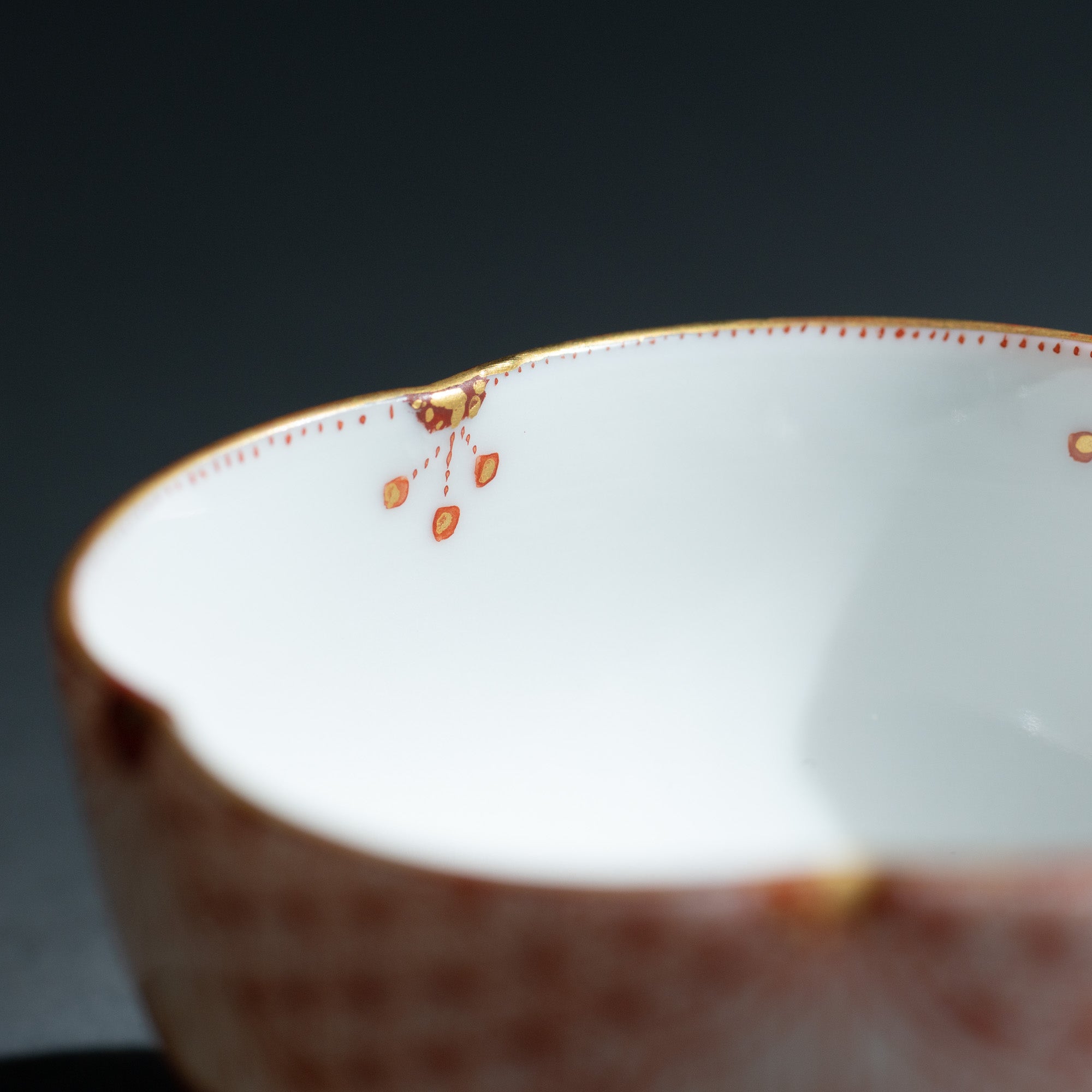
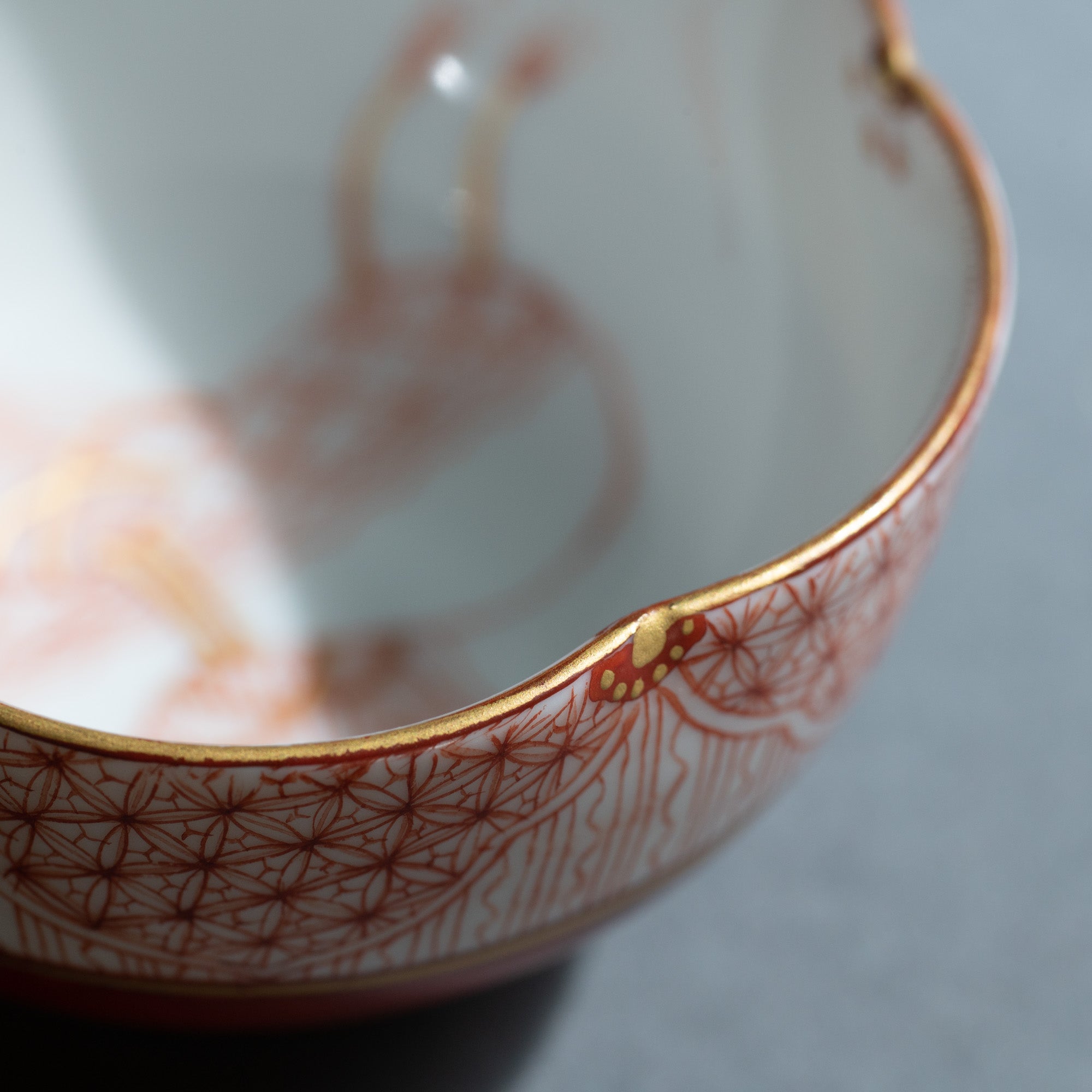
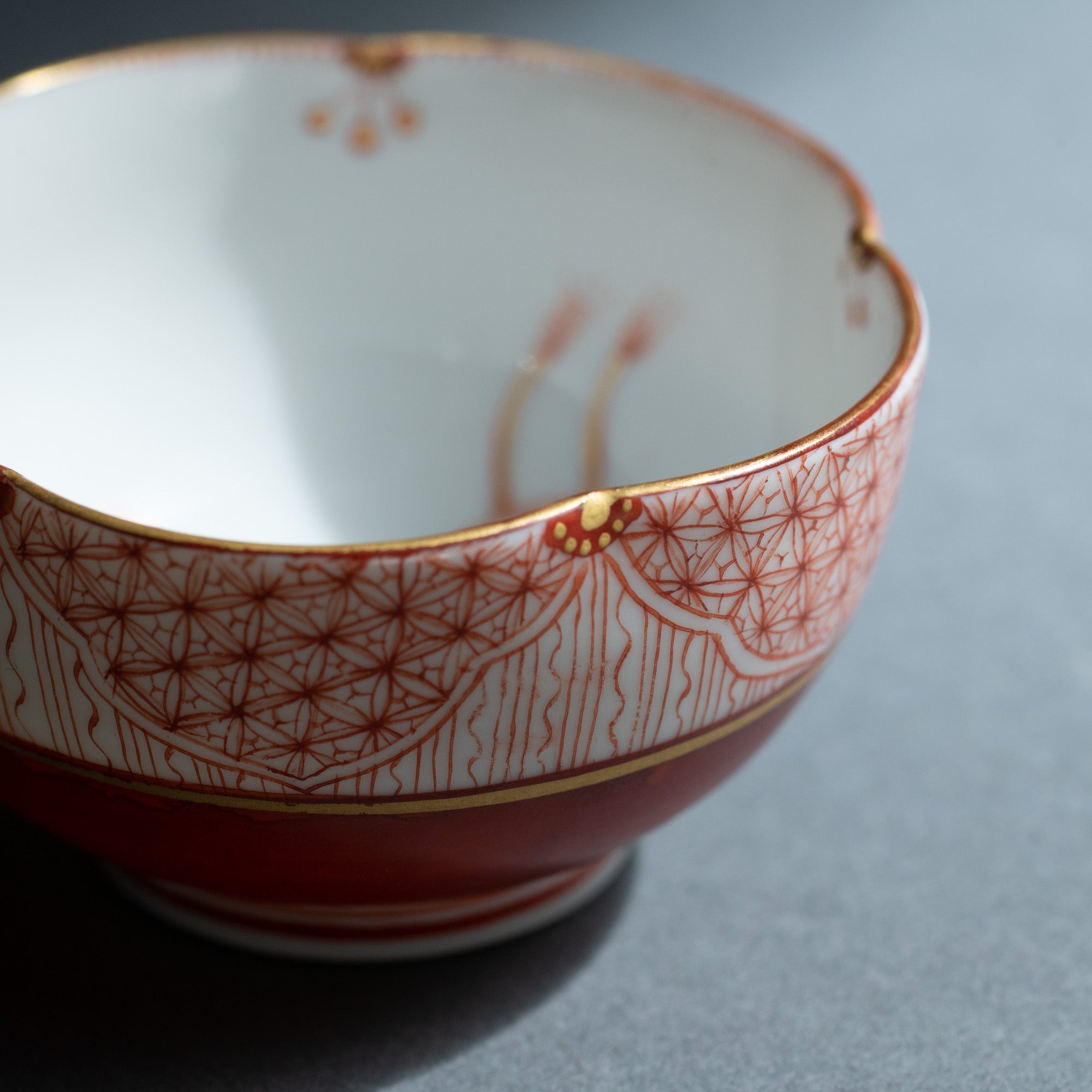
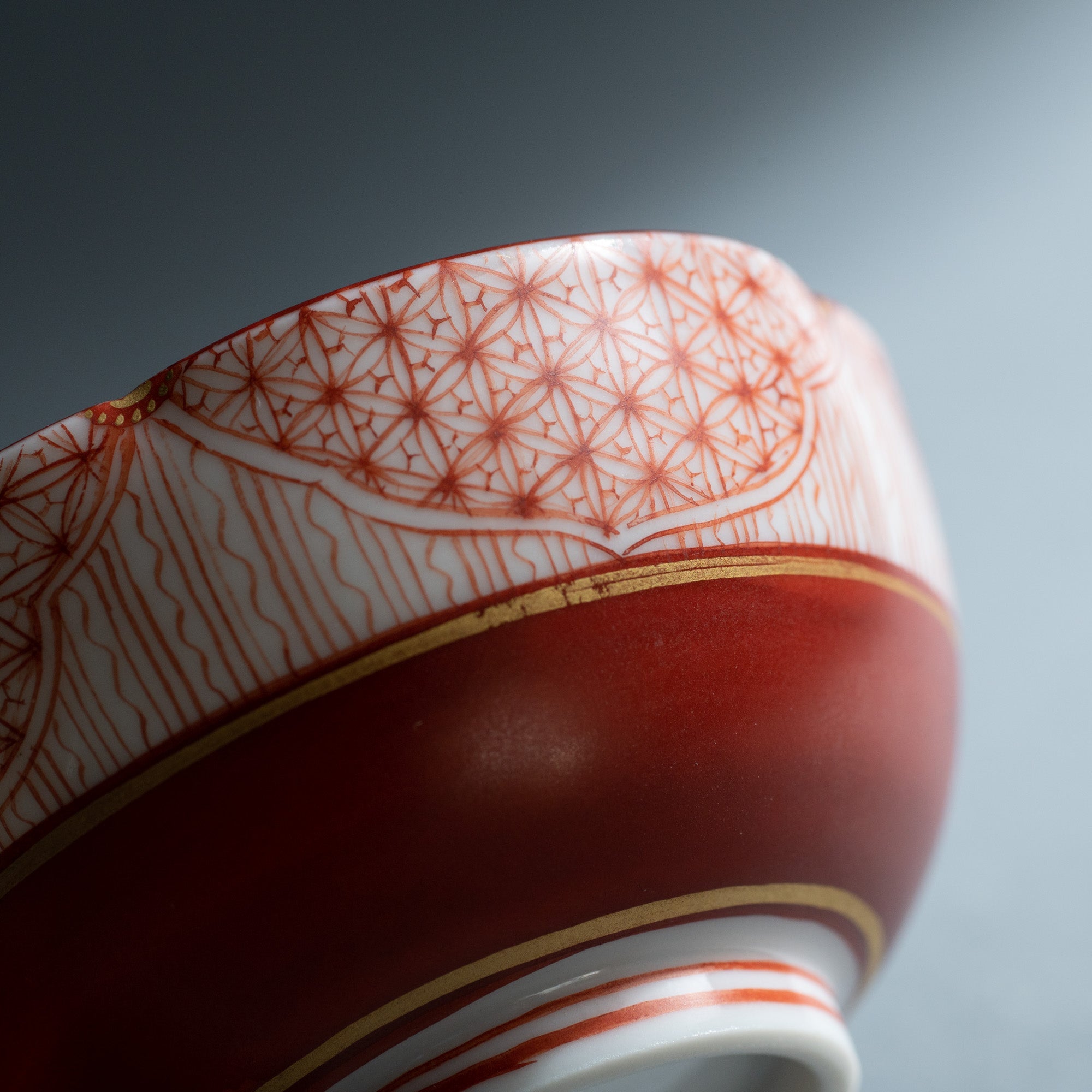
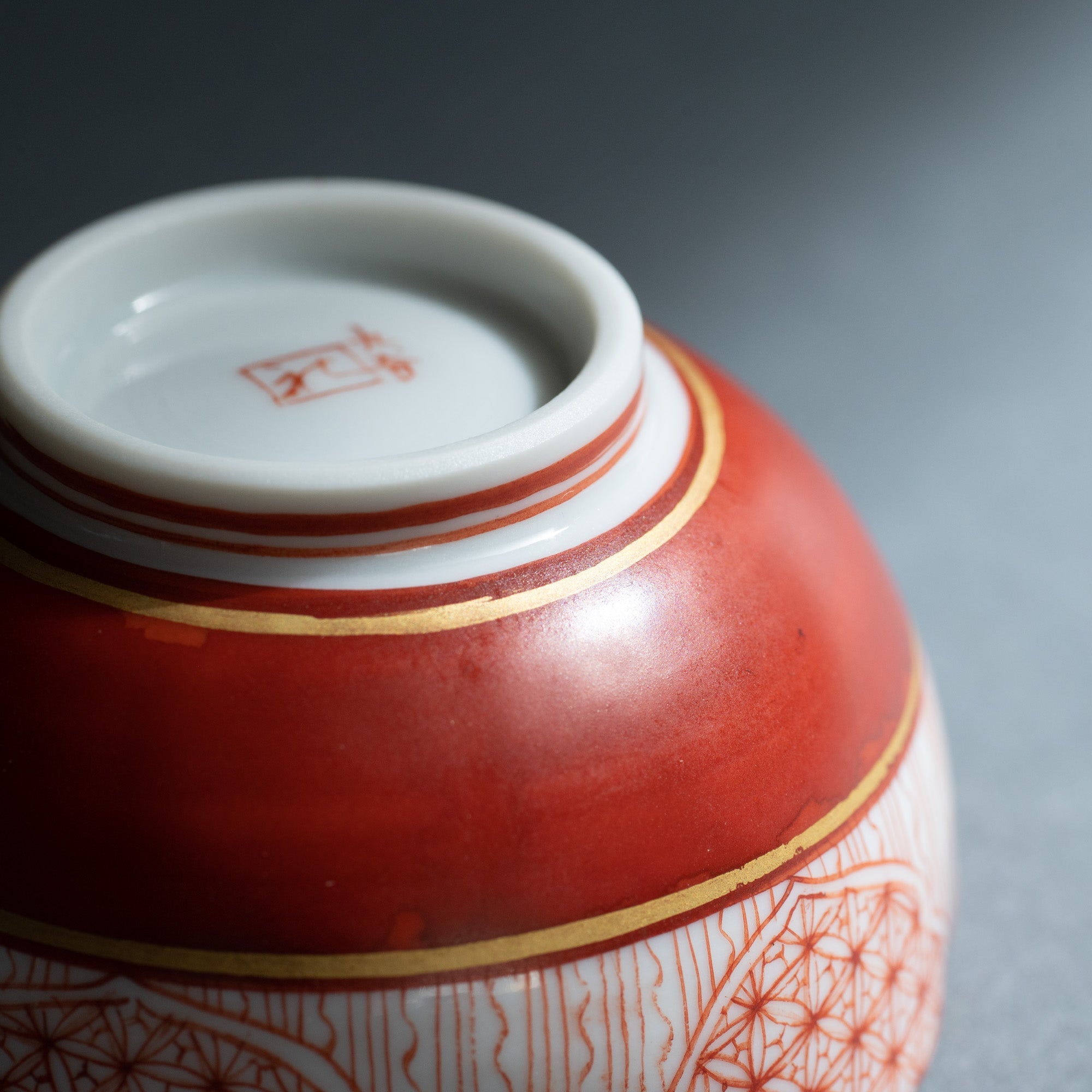


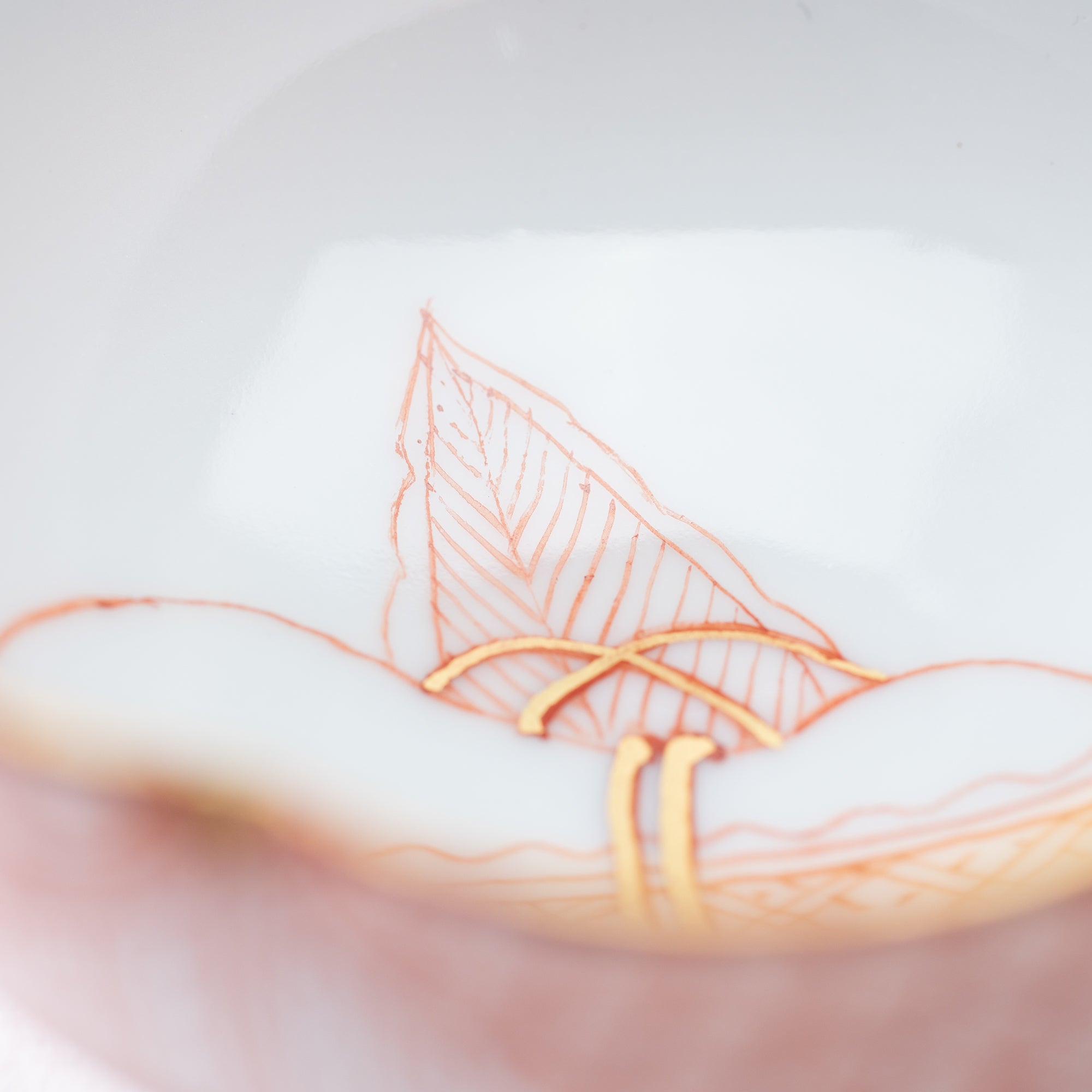
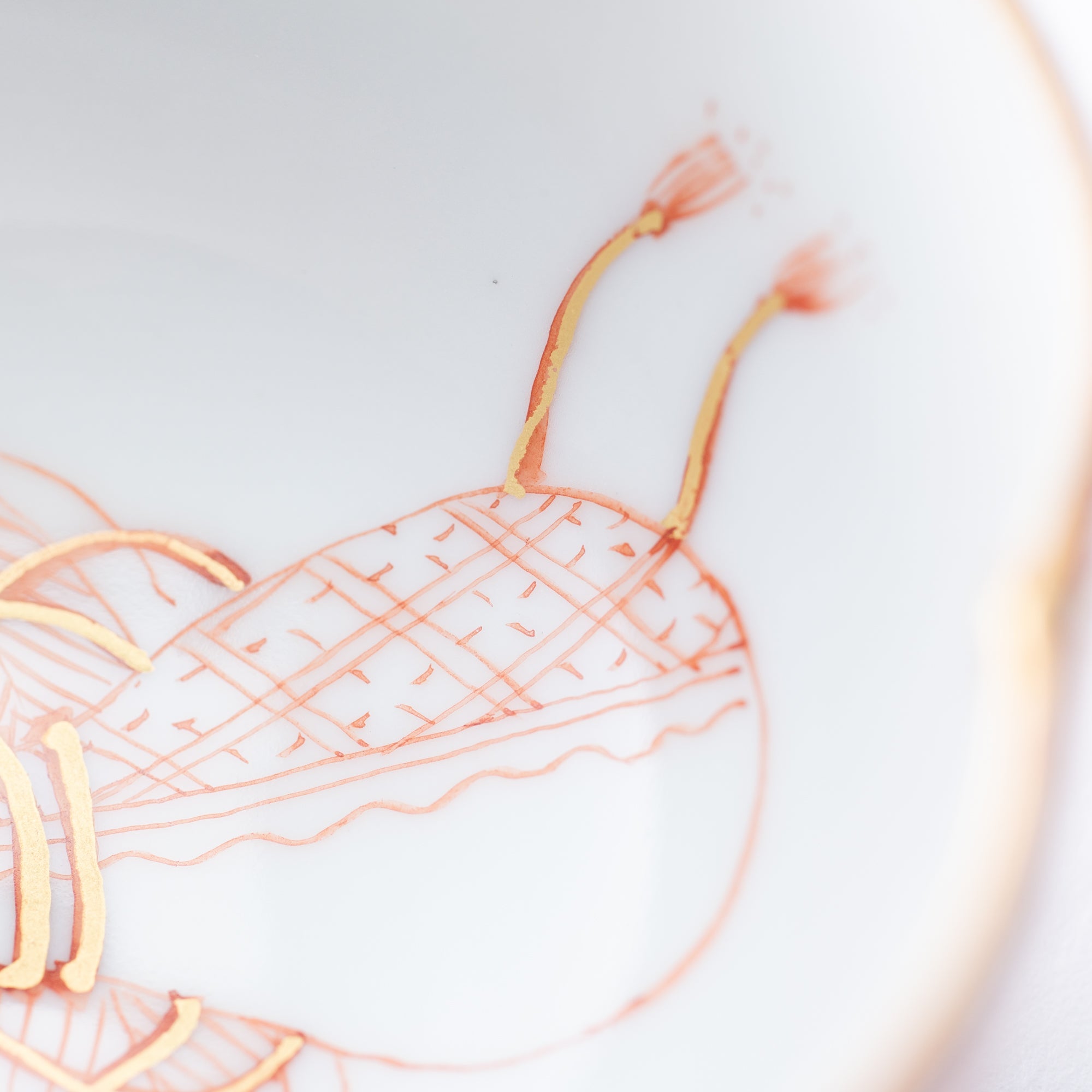
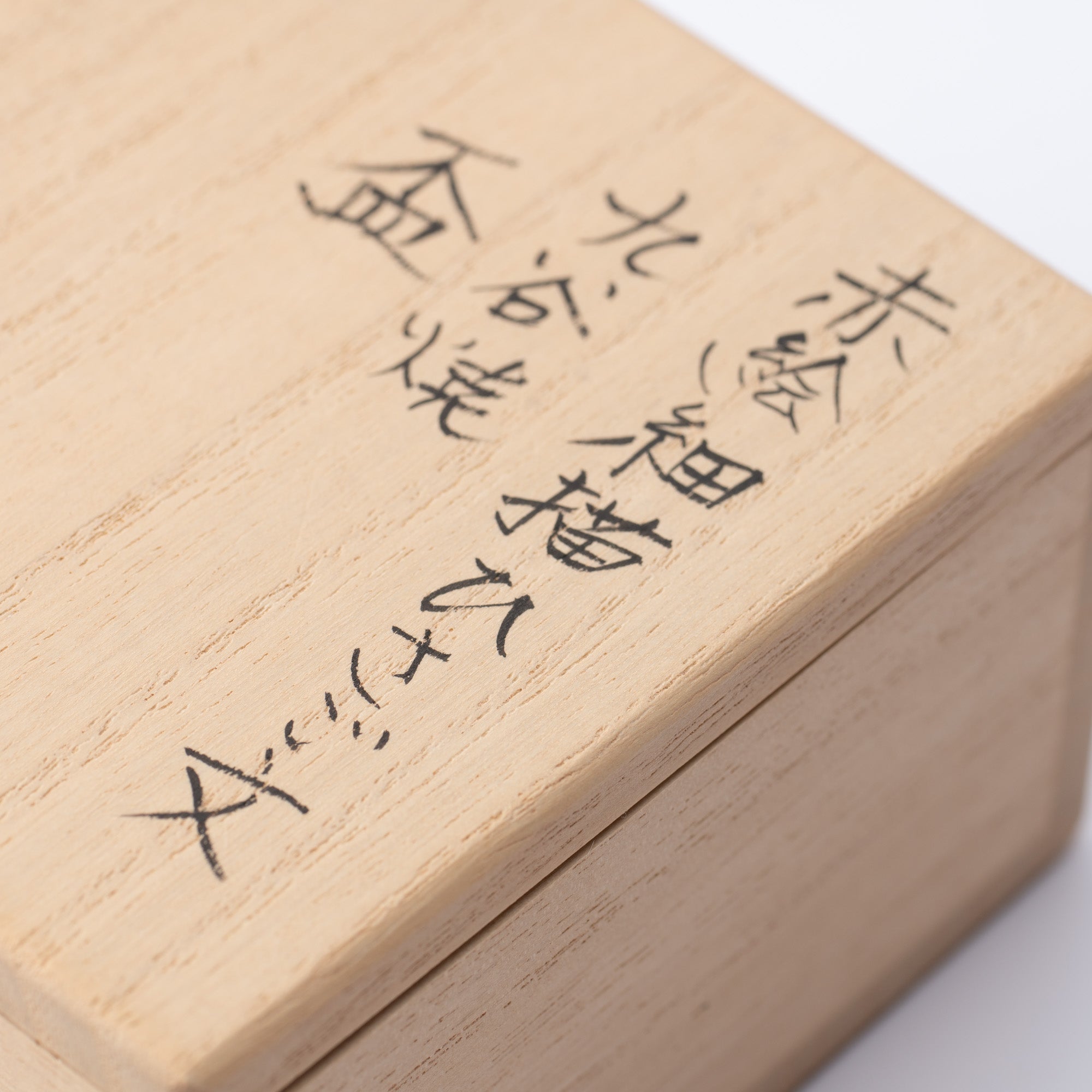
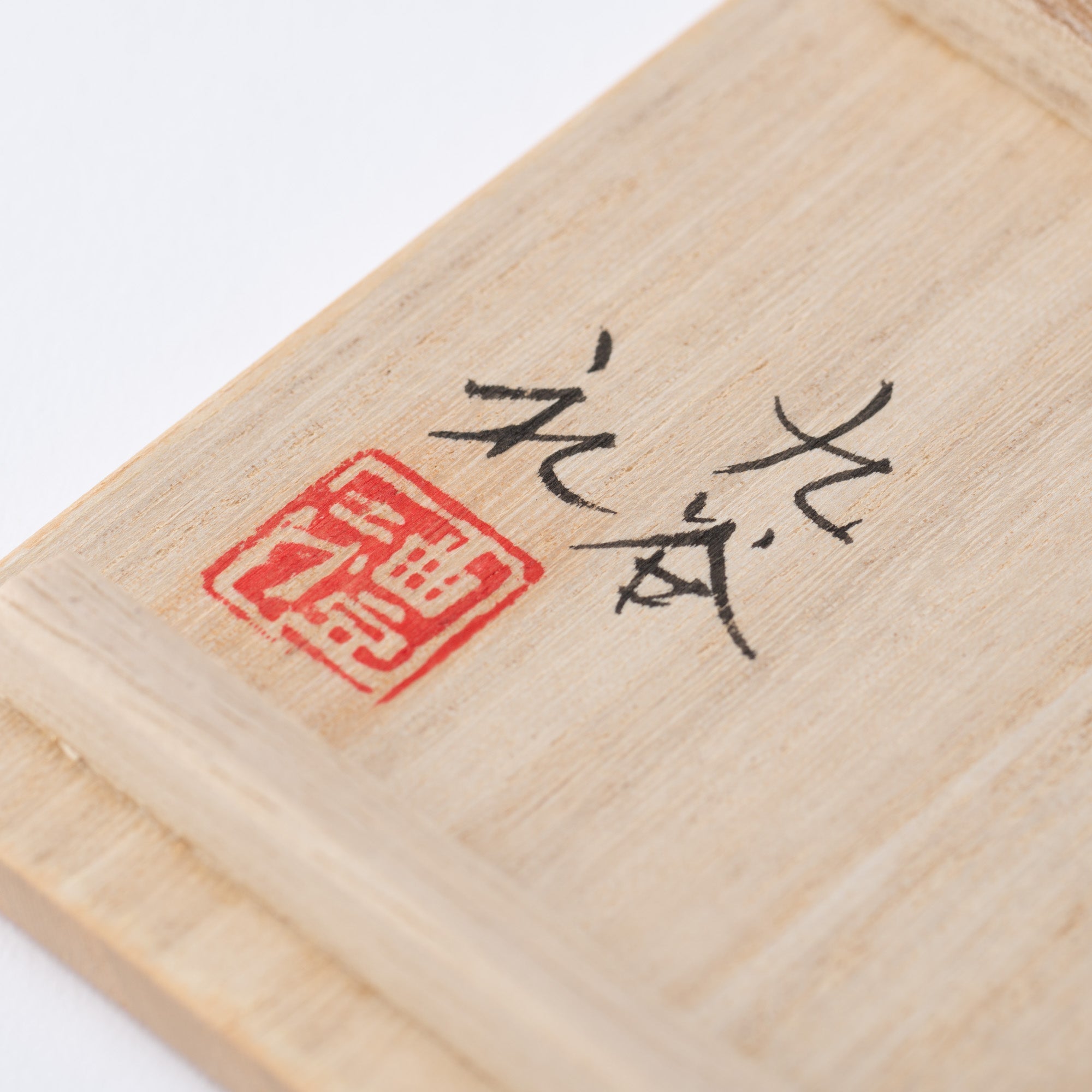
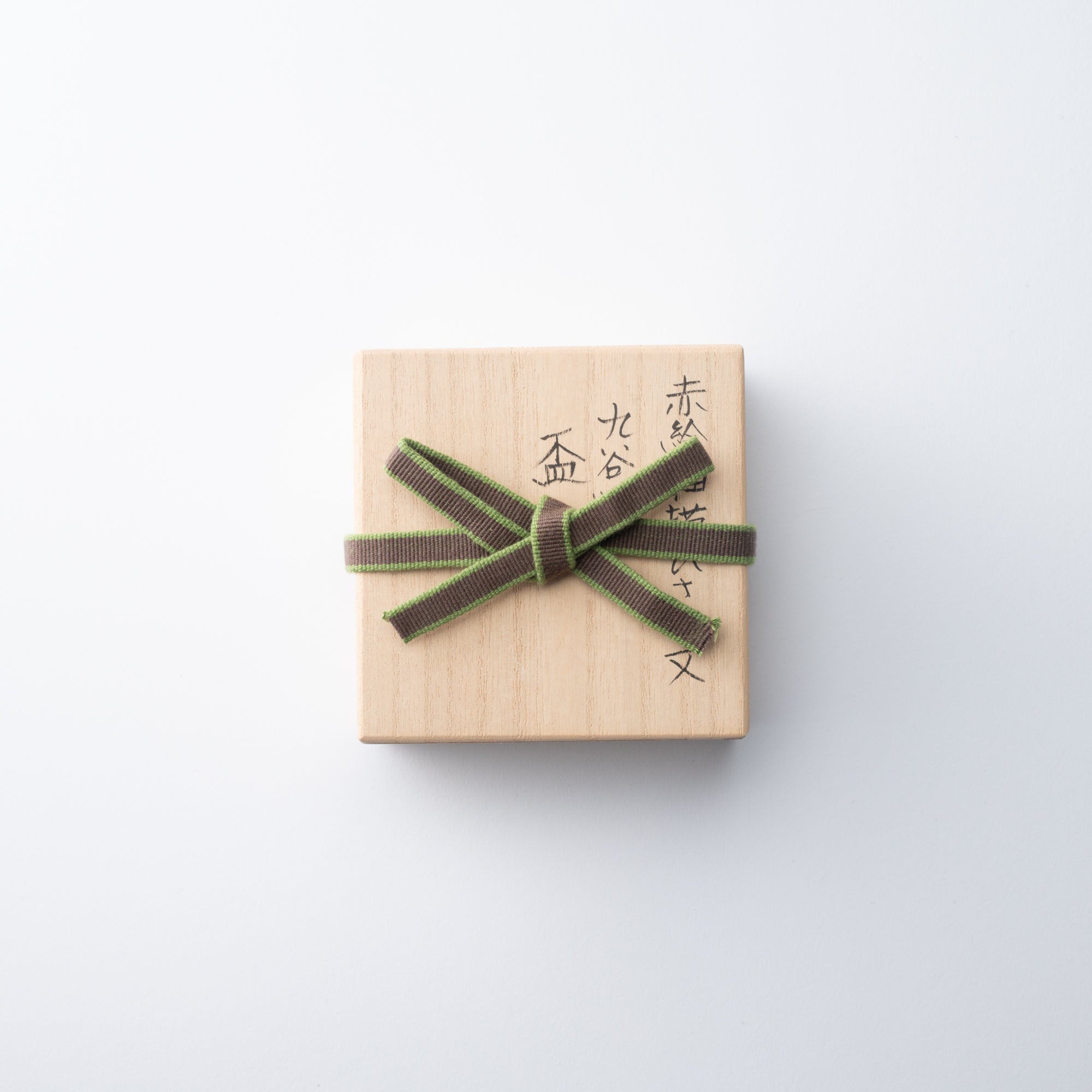

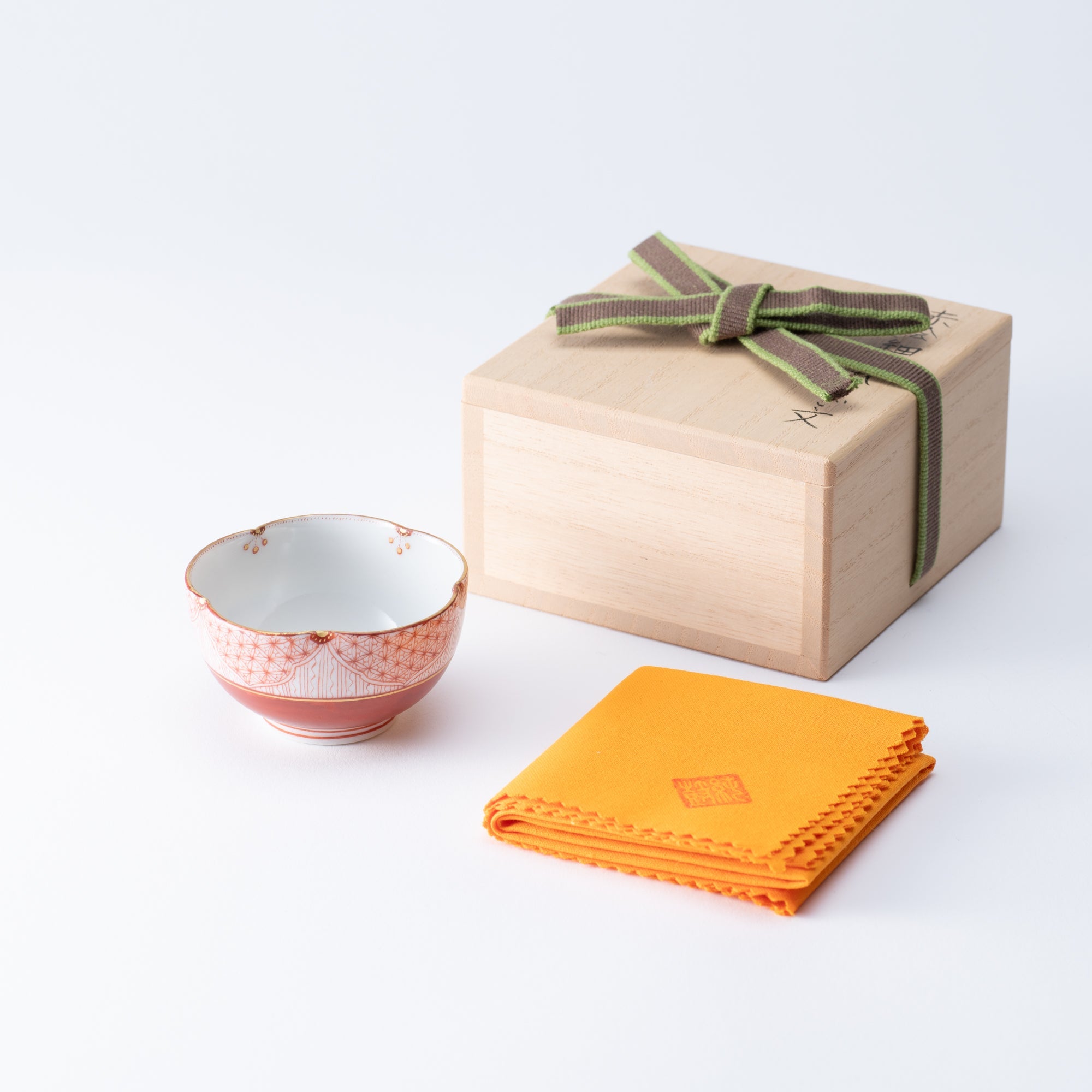
Copa de sake de calabaza Akae-Saibyo
Esta taza de sake, una obra maestra de Fukushima Reiko, presenta delicados motivos rojos en la parte superior, que contrastan a la perfección con el vibrante relleno rojo de la parte inferior. Acentuada con un lujoso dorado, la taza rebosa elegancia. El motivo de calabaza pintado en el interior es un símbolo de buena fortuna en la cultura japonesa, que promete abundancia y prosperidad a su dueño.
El akae-saibyo es una refinada técnica de cerámica kutani originaria del período Edo (1603 d. C.-1868 d. C.). Dominada en el horno Miyamoto, esta forma de arte emplea bengara, un pigmento rojo de óxido de hierro, para representar meticulosamente aves, flores, paisajes y figuras humanas. Si bien algunas piezas están realzadas con detalles dorados, la esencia del akae-saibyo reside en su paleta monocromática de rojos. Famoso por sus líneas excepcionalmente finas, a menudo de tan solo 0,1 mm (0,004 pulgadas), los artesanos manipulan la densidad de las líneas para crear sutiles variaciones en el tono rojo, aportando profundidad y riqueza a sus diseños.
DETAILS
| Quantity | 1 |
| Size | D 6.5 cm (2.6 in) x H 3.5 cm (1.4 in) |
| Capacity | 50 ml (1.7 oz) |
| Material | Porcelain |
| Package Type | Wooden box |
| Microwave | No |
| Dishwasher | No |
Maker / Brand
Las obras de Fukushima Reiko utilizan la técnica akae-saibyo , uno de los métodos más destacados de la cerámica contemporánea de Kutani. Esta técnica emplea líneas rojas finísimas para crear patrones intrincados y hermosos sobre la porcelana. Sus elegantes pinceladas hacen que cada línea parezca flotar sobre la porcelana, creando un efecto tridimensional que evoca a bailarines que entran y salen de las sombras, formando un degradado de tonos rojos. Cada pieza sumerge al espectador en la belleza de la artesanía tradicional con patrones y diseños refinados.
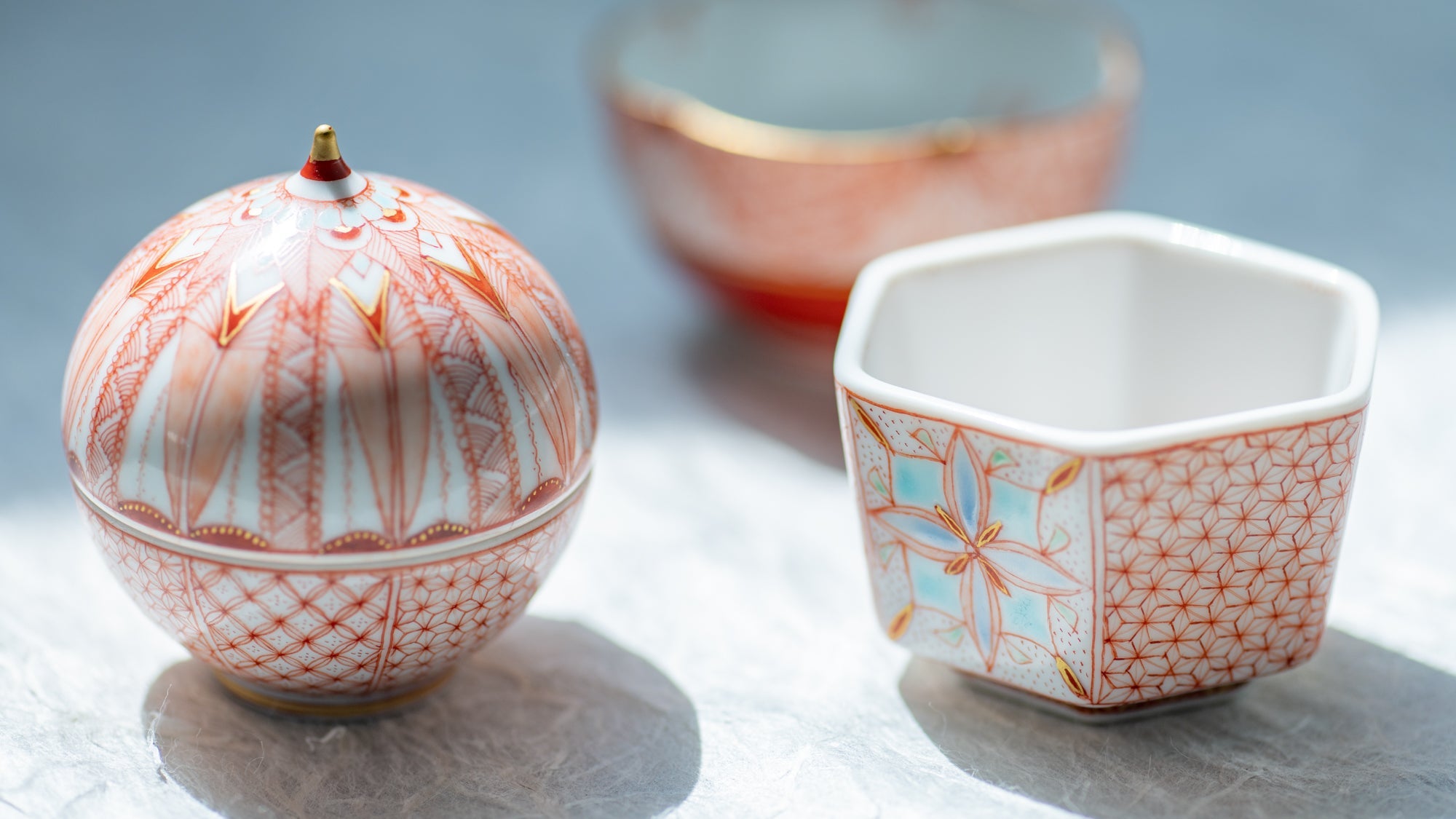
Crafts
La cerámica Kutani se produce en la región de Kaga, en la prefectura de Ishikawa, con más de 350 años de historia. Se caracteriza por el intenso brillo de sus cinco colores: azul marino, rojo, morado, verde y amarillo. que se aplican a las líneas audaces y atrevidas. Su larga historia se ha desarrollado gracias al esfuerzo incansable y al entusiasmo de quienes han buscado la innovación manteniendo la tradición.
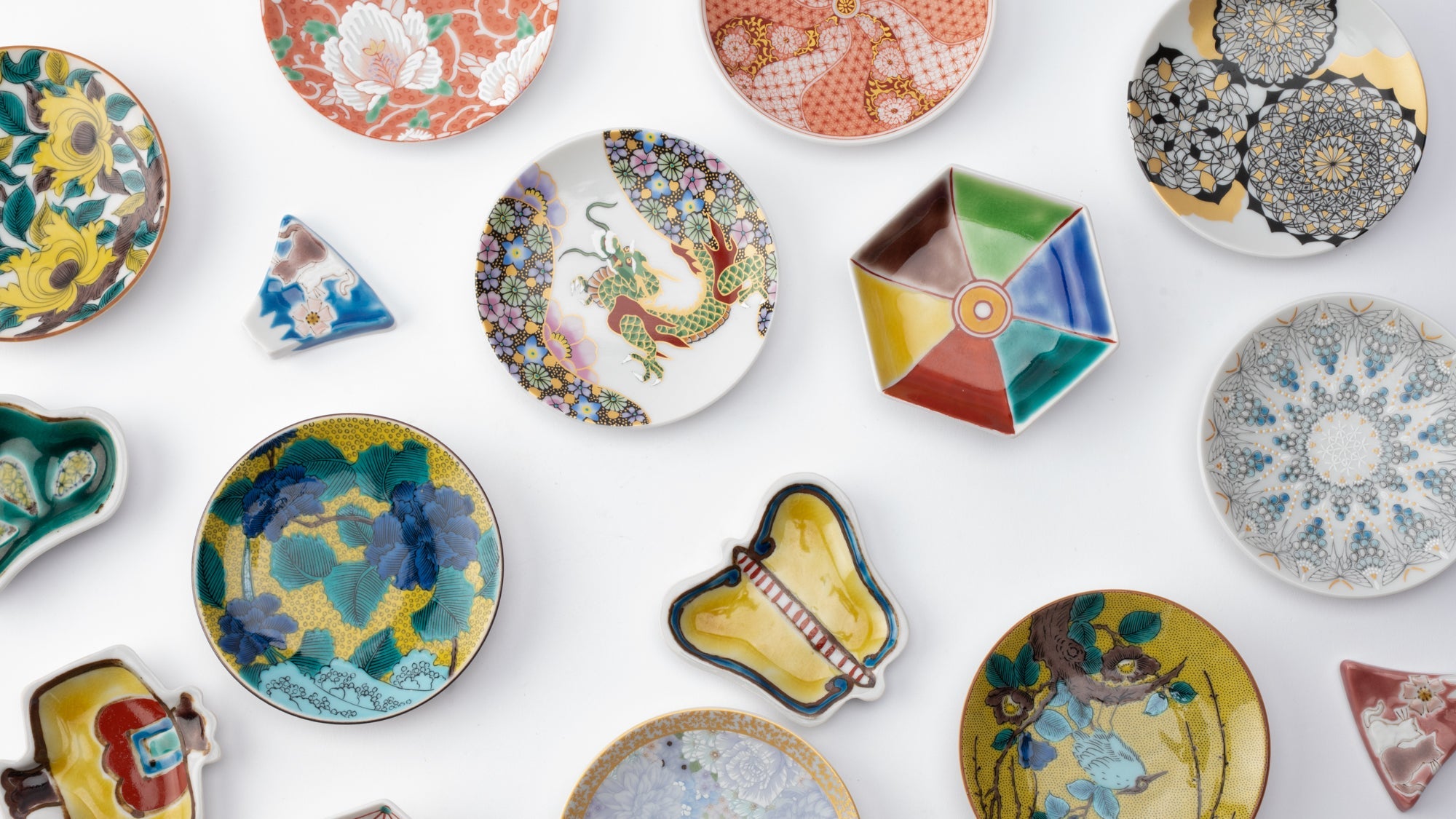
Elige opciones
About Artist
Galería Musubi
Desde sus inicios, MUSUBI KILN se ha esforzado por presentar al mundo las mejores artesanías tradicionales de maestros de todo Japón.
Aquí, en la Galería, buscamos exhibir las técnicas tradicionales más avanzadas, transmitidas de generación en generación. Podrá descubrir obras de maestros que no solo han perfeccionado estos métodos, sino que también han aportado su imaginación para innovar aún más el oficio.
Algunos de estos maestros incluso han sido nombrados Tesoros Nacionales Vivientes, un título que les otorgó el gobierno japonés para reconocer formalmente su contribución a la artesanía y la cultura, consolidando así su legado y convirtiéndolos en una parte importante de la historia del arte.
Cada pieza se elabora meticulosamente a mano durante muchos meses para crear un tesoro atemporal único. Y cuando esté en tu hogar, tú también formarás parte de esa historia.
Bienvenidos a la Galería. Les invitamos a explorarla con calma.
